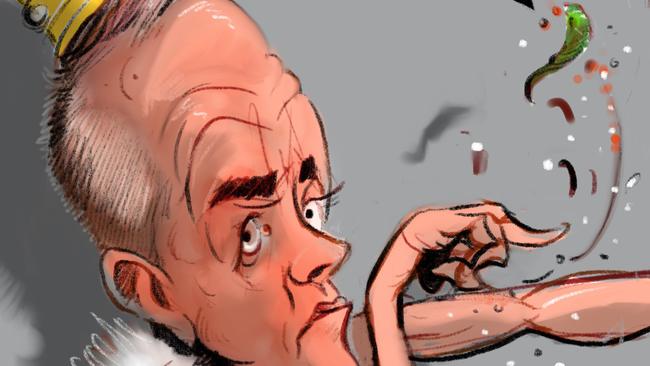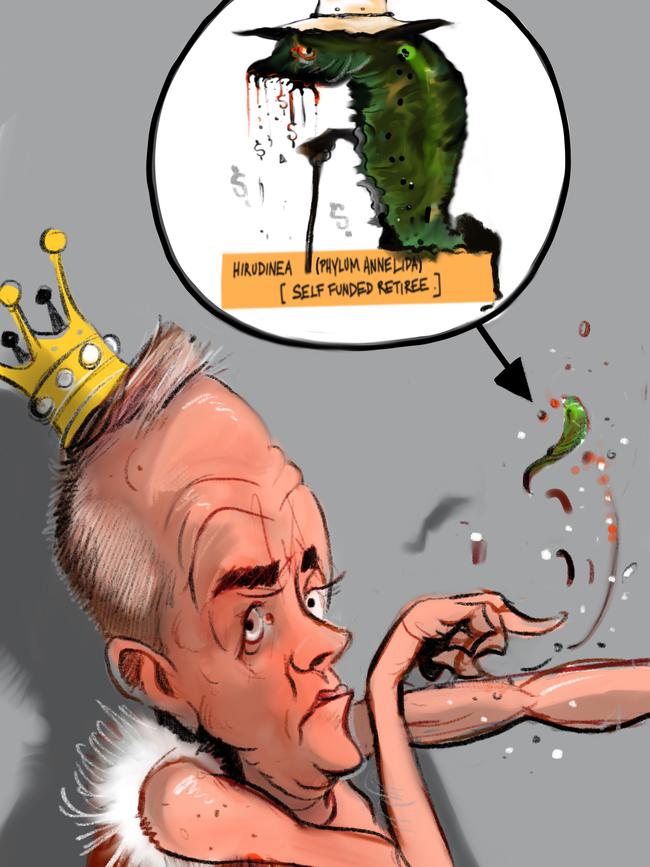
Rarely can a political party have so cynically exploited class envy and ignorance with such draconian consequences for the victims as the ALP with its proposed ban on cash refunds of franking credits. The ALP has effectively said it will raise $59 billion over 10 years by partially reimposing the old system of double taxation of company profits paid to self-funded retirees. It has effectively said to these people: “You don’t vote for us, and anyway this is a complex area of tax law the average voter doesn’t understand, so we feel safe in expropriating your income.”
And there is a good chance they will get away with it because the average voter who is still working won’t appreciate what has happened. Those who will realise — self-funded retirees — don’t vote ALP, and so the ALP is happy to throw them to the fiscal wolves.
Some explanation is necessary. Australia used to have a system of double taxation of company profits. Before dividend imputation was introduced in 1987, if a company made a profit of $100 it paid tax on that profit at the ruling corporate tax rate (let’s call it 30 per cent, but it was indeed higher for much of the 1980s), leaving $70 to be distributed to shareholders. When the $70 was distributed to shareholders it would be taxed again at the shareholder’s marginal tax rate. If the shareholder’s marginal tax rate was 50 per cent (and personal rates were higher then than now), the dividend would bear another $35 in tax. So by the time it reached the shareholder, $100 in company profit would bear $65 in tax, leaving the shareholder with $35.
To its eternal credit, in 1987 the Hawke government introduced dividend imputation to abolish double taxation of company profits. This enabled shareholders to claim a credit against their own income tax for the corporate tax a company had paid. To use the illustration above, if the $70 dividend was distributed to Shareholder X, who was on a 50 per cent tax rate, X would declare the $70 dividend as taxable income and pay $35 in tax on it — but X would get a $30 tax credit (being the amount of tax the company had paid) to use against other taxable income.

In its original design the $30 tax credit could be used only to reduce tax payable on other income. It could not be claimed in cash. That discriminated in favour of rich people with other taxable income to shield. If you were poor and had no other taxable income to shield, your $30 tax credit was effectively useless. Poor people were effectively paying (indirectly) company tax that rich people escaped. So the Howard government allowed the $30 credit for company tax to be collected in cash by Australian resident shareholders who didn’t have enough other taxable income to use the credit fully.
And this innovative, uniquely Australian system of dividend imputation had at least two great benefits. It gave Australian companies an incentive to pay as much Australian tax as possible to have more tax credits to distribute to its shareholders. But in addition to being a marvellous antidote to company tax evasion, it induced pension funds and self-funded retirees to invest heavily in Australian tax-paying companies, thereby stoking jobs, growth and the economy. The ultimate virtuous circle, you would think.
But the ALP doesn’t like self-funded retirees and regards them as a never-ending font of potential tax. It proposes to end distribution of franking credits in cash but will continue to allow those rich enough to have other taxable income to set the credits off against to do so. Thus this penalises those with no taxable income while leaving those with other taxable income unaffected.
How can it be fair to allow taxpayers to derive full value for franking credits but not non-taxpayers? What is the difference between getting cash for your franking credit and being allowed to use the franking credit to reduce your tax?
Bill Shorten is again the emperor with no clothes, with not even the figleaf of “fairness” at his disposal. He simply hopes punters won’t understand how they have engineered financial fraud on a huge scale.
And this non-means-tested act of theft will have draconian effects on some people. If a self-funded retiree lives on $7000 of fully franked dividends a year and receives $3000 of franking credits a year paid in cash, giving them total income of $10,000, that retiree’s income has just been slashed to $7000.
The consequences are huge. There will be numerous retirees forced on to the pension — an own goal for a political party trying to get back to surplus. Many self-funded retirees will sell their Australian share portfolios and put the money into real estate. It’s quite possible there will be a new property boom, with disastrous consequences for housing affordability. Young home buyers will now compete at auctions with self-funded retirees displaced from the equity markets.
And what will companies do now that the value of their franking credits has been so dramatically reduced? Certainly the incentive to pay tax has been significantly cut. But the bigger problem is the increased cost of equity. Shares will lose value and Australian companies will find it harder to raise funds. Labor has shown itself not to understand how the economy or the tax system works.
The ALP has long disliked those who have worked hard for decades and been sufficiently successful to fund their own retirements. It sees them as rich milch cows. This is the final act of slaughter.
UPDATE: I’ve just been alerted to how complicated this can be, which is what Labor is counting on. Larry Magid, the renowned tax lawyer from Allens point outs to me this morning that a fully franked dividend of $70 cash is grossed up to an amount of assessable income of $100 (which I omitted). So on my assumed 50 per cent marginal tax rate the tax payable is $50, less a franking credit of $30, net $20 cash, total tax of $50 overall. As Larry said, my logic remains same even if the number changes.
Janeta@bigpond.net.au





